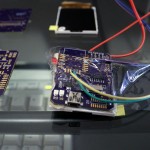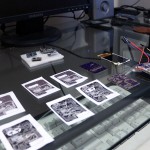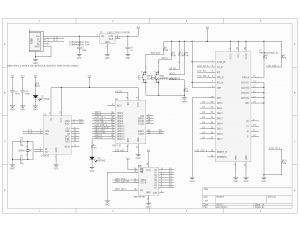And now, for my next trick, I’m going to manufacture a million tiny monitor widgets to snap onto your big monitors to monitor your widgets.
Still with me?
This is a project with many parts, but I will only get in to one phase on this log.
I’m hooking up an ESP8266 WiFi module to an inexpensive TFT LCD. The idea is to have an internet-connected, smaller-than-credit-card sized screen that displays one thing, and one thing only.
Some use-cases could be the two-day weather forecast, a slideshow picture-frame, or a graph of the current price of Bitcoin. Things that don’t require more than a couple changes per second, and don’t warrant using up real estate on a main monitor when work needs to get done.
The system design is actually really simple. A mini-USB connector is feeding power to a 3.3v linear regulator, and data to a USB-UART bridge. The bridge is able to program the ESP8266 via USB to a host computer, but that is not required for general operation. A standard cellphone charger plugged into the USB connector for power is fine. The WiFi module connects to an Access Point periodically and grabs a static image from a website.
This image is then fed to the LCD. That’s it. That’s all it does. I’ve gotten the BoM cost down to around $8 each, so it’s reasonable to have a lot of them on a desk, displaying various bits of data.
The hardware files, including Gerbers, of revision 1 are here. There are also folders for the firmware, software, and test rig, but as of the time of writing, that is all very much a work in progress.
That link will soon be outdated, but I’ll tag the first revision as a “Release” in GitHub when I’ve got the different parts working.
As for next steps:
The LCD I’ve chosen is one of the cheapest ones I’ve found. It has a parallel data bus for communication, and I’ve used a 74HC595 serial-parallel chip to make it work with the ESP8266 module’s limited IO. I’m using an ESP-12E for reference, but trying to make it work with the original ESP-12 as a bonus.
I think I can do some interesting things by replacing both the SIPO and the USB-UART bridge with a microcontroller. Things involving bootloaders, and things involving cross-monitor communication. Cool stuff.



